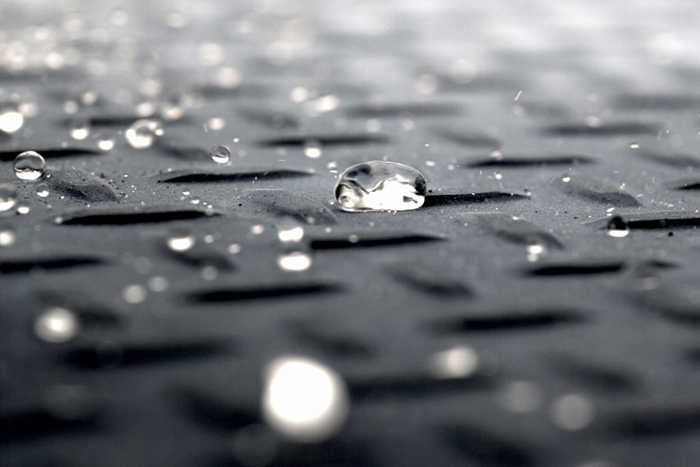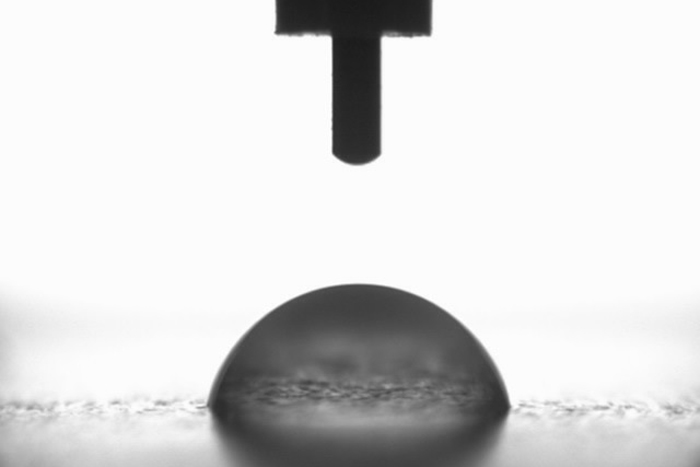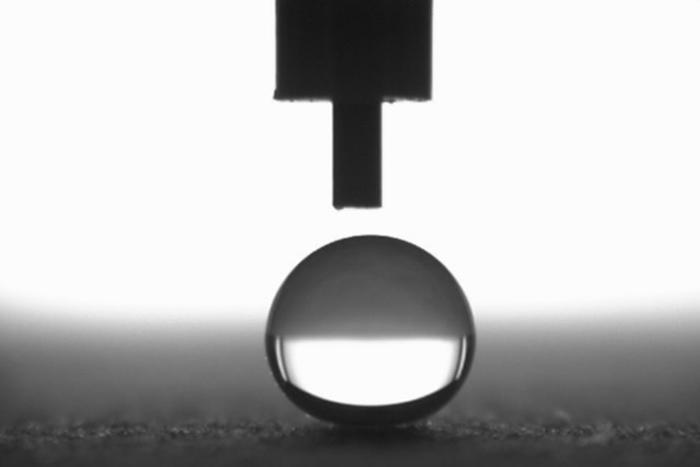
Superhydrophobic What? How Rust-Oleum NeverWet Works

Nathan Ferraro and Joe Ferguson, chemists at Rust-Oleum's Research and Development Laboratory in Pleasant Prairie, Wis., contributed this article to LiveScience's Expert Voices: Op-Ed & Insights.
Imagine never having to deal with the headache of water-soaked items or wet surfaces. With new technology that creates superhydrophobic surfaces on everyday materials, that wish may be within reach.
When a drop of liquid contacts a surface, it creates a "contact angle" — the angle formed between the edge of the drop and the surface it rests on. The higher the contact angle, the more likely a liquid will roll off a surface.

A superhydrophobic surface repels water to an extreme degree — specifically, it has a contact angle with water of at least 150 degrees. A surface without hydrophobic properties typically has a contact angle with water below 80 degrees.
When a liquid hits a non-repellant surface, the liquid pools, looking like a deflated ball, and saturates the surface. When water or mud contacts a superhydrophobic-treated surface, by contrast, the extreme contact angle causes the liquid to form nearly perfect spheres, like marbles of fluid. This phenomenon keeps the protected surface completely dry. As an additional benefit, this also prevents ice formation.

To achieve superhydrophobicity, a surface must have two physical properties: an incredible micro-roughness and a low surface-energy. The most famous example of a superhydrophobic surface is the waxy leaf of a lotus, which is extremely effective at repelling water. The roughness of a lotus leaf enables it to completely repel raindrops as they hit its surface. Because of that extreme repellency, the raindrops travel with enough force across the leaf to also collect and sweep away dirt, which also gives the lotus flower self-cleaning properties.

While lotuses have existed for millions of years, researchers have only been creating and studying synthetic superhydrophobic coatings for the last 30 years. In most representative examples, the coatings replicate the superhydrophobic effect using a combination of low surface-energy materials and laboratory-controlled application techniques. While many examples of superhydrophobic coatings exist in the academic literature, from the consumer's perspective, the concept was still a laboratory oddity until recently.
Sign up for the Live Science daily newsletter now
Get the world’s most fascinating discoveries delivered straight to your inbox.
The company where we conduct research, Rust-Oleum, is a leading manufacturer of paints and coatings, and is the first company to introduce a consumer-friendly superhydrophobic treatment to the marketplace: Rust-Oleum NeverWet. Available in stores since June 2013, it is a multi-surface liquid-repelling treatment that dramatically repels water, mud, ice and other liquids. It also guards virtually any surface against the corrosion and wear caused by exposure to moisture.
Consumers apply the treatment using a two-step aerosol system and can use it on an extremely wide range of materials, including metal, concrete, wood, aluminum, galvanized metal, polyvinyl chloride (PVC), masonry, asphalt, vinyl siding, paper and plastic. NeverWet also protects surfaces from thicker, water-based liquids like juices, syrups and other water-based condiments. One kit of NeverWet provides 10 to 15 square-feet (.9 to 1.4 square meters) of coverage.
In October of last year, NeverWet won a Popular Mechanics Breakthrough Award as one of the top 10 breakthrough products of 2013 (see video). At the awards event, attendees could experiment with the product on everyday tools, like a wooden kitchen spoon, using common liquids, like cranberry juice. Since NeverWet's launch in June, consumers have used it to keep liquids off of work boots, umbrellas, bricks, concrete sidewalks, backpacks, satellite dishes, picnic tables, tents, art projects and more. While many applications for NeverWet have already been tested, the door to superhydrophobicity is just opening.
The views expressed are those of the author and do not necessarily reflect the views of the publisher. This version of the article was originally published on LiveScience.









